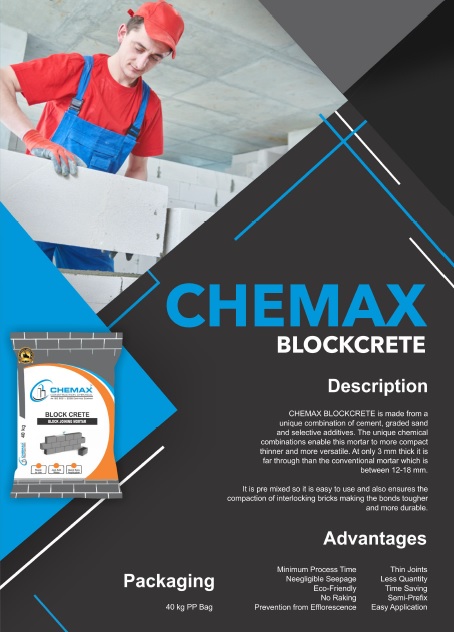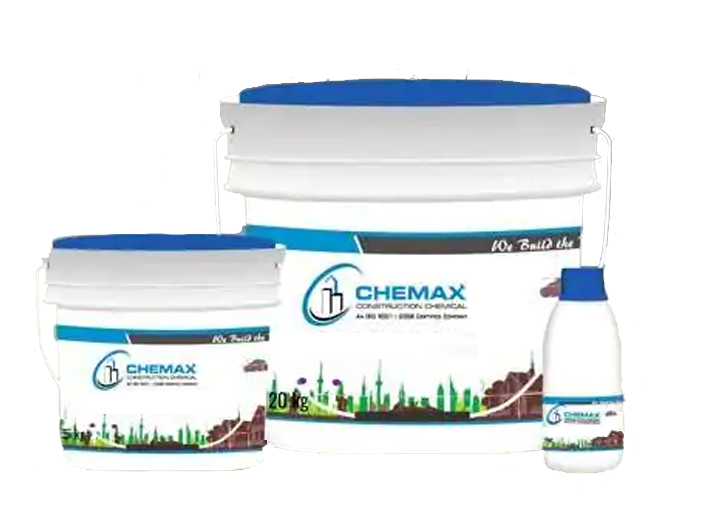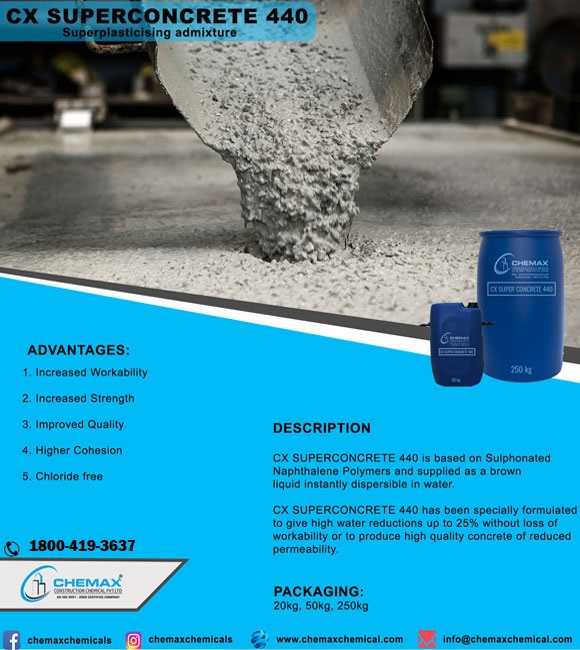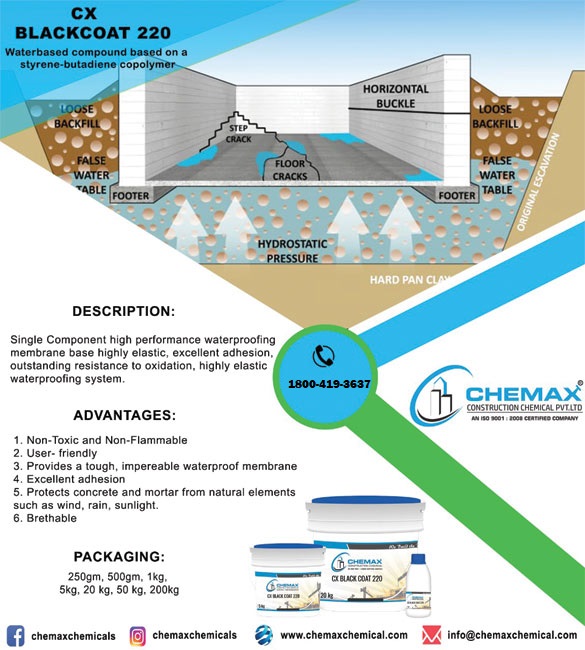 View Large
View Large
CX AIR ENTRAINING
CX AIR ENTRAINING is an air-entraining admixture which gives concrete extra protection by
creating ultra-stable air bubbles that are strong, small and closely spaced – a characteristic especially useful in the types of concrete known for their difficulty to entrain and maintain the air content
desired.
-
Uses:
Concrete exposed to freeze/thaw attack
To reduce bleeding due to poor aggregate grading.
Download Brochure to view our product
Advantages
Increased resistance
Increased resistance to damage from freeze/thaw cycles and to scaling from de-icing salts.
Improved Stability
Greatly improved stability of air Entrainment
Reduced permeability
Reduced permeability – increased water-tightness.
Improved Air
Improved air-void system in hardened concrete.
Application
- Concrete durability research has established that the best protection for concrete from the adverse effects of freeze/thaw cycles and de-icing salts results from: proper air content in the hardened concrete; a suitable air-void system in terms of bubble size and spacing; and adequate concrete strength; assuming the use of sound aggregates and proper mixing, placing, handling and curing techniques.
- Control of air content should be based upon determinations made on concrete at the time of placement, following ad-justment of the batch to proper consistency (slump). The rate of use of an air-entraining admixture depends on the air content to be obtained along with many other factors.
- The amount normally required is reduced by the introduction of water-reducing, set-controlling admixture.
- When unusually low amounts of an air-entraining admixture are sufficient to achieve normal ranges of air content or if the required amount of air-entraining admixture necessary to achieve required levels of air content is observed to decrease significantly under given conditions, the reason for this change should be investigated.
- In such cases, it is especially important to determine: (a) that a proper amount of air is contained in the fresh concrete at the point of placement, and (b) that a suitable air-void system (spacing factor) is being obtained in the hardened concrete.
- CX AIR ENTRAINING is designed to be incorporated in concrete targeted to achieve air contents in the range 3 - 8%. It is compatible with all EN 197 cements but the dosage may vary.
- The amount of CX AIR ENTRAINING admixture used will depend upon the amount of entrained air required under actual job conditions. In a trial mix, use 600 ml 100kg of cement and adjust in the light of results obtained.
- In mixes containing water-reducing, set-controlling admixtures, the amount of CX AIR ENTRAINING may be considerably less than the amount required in plain concrete.
- There is no standard dosage rate for CX AIR ENTRAINING admixture. The exact quantity of airentraining admixture needed for a given air content of concrete is not predictable because of differences in constituent materials.
- Typical factors which might influence the amount of air entrained are: water content, temperature, cement, sand grading, sand aggregate ratio, slump, means of conveying and placement, use of extra fine materials such as fly ash, etc.
- The amount of CX AIR ENTRAINING used will depend upon the amount of entrained air required under actual job conditions.
- For optimum, consistent performance, the air-entraining admixture should be dispensed on damp, normal, or lightweight fine aggregate. If this is not possible, plant trials should be performed to identify the optimum dispensing method.
- When using lightweight fine aggregate, field evaluations should be conducted to determine the best location to dispense the air-entraining admixture - on the damp fine aggregate or with the initial batch water.
- Packaging : CX AIR ENTRAINING is supplied in 200litre drums and 25-litre containers.
- Storage : Store in original sealed containers and at temperatures between 5°C and 30°C. Store under cover, out of direct sunlight and protect from extremes of temperature. Failure to comply with the recommended storage conditions may result in premature deterioration of the product or packaging.
- Add CX AIR ENTRAINING to the concrete mix using a dispenser designed for air-entraining admixtures; or add manually using a suitable measuring device that ensures accuracy within plus or minus 3% of the required amount.
- There is no standard dosage rate for CX AIR ENTRAINING admixture. The exact quantity of airentraining admixture needed for a given air content of concrete is not predictable because of differences in constituent materials.
- Typical factors which might influence the amount of air entrained are: water content, temperature, cement, sand grading, sand aggregate ratio, slump, means of conveying and placement, use of extra fine materials such as fly ash, etc. The amount of CX AIR ENTRAINING used upon the amount of entrained air required under actual job conditions.
- In mixes containing water-reducing, set-controlling admixtures, the amount of CX AIR ENTRAINING needed is somewhat less than the amount required in plain concrete.
- In mixes requiring a significantly higher or lower dosage to obtain the desired air content, consult your CHEMAX Construction Chemicals, representative or Technical Services Department.
- Measure the air content of the trial mix and either increase or decrease the quantity of CX AIR ENTRAINING admixture to obtain the desired air content in the production mix. Check the air content of the first batch and make further adjustments if needed.
- Frequent checks during the course of the work should be made since factors mentioned in paragraph 3 above may require adjustments in the CX AIR ENTRAINING -dosage rate.
- Adjustments to the dosage should be based on the amount of entrained air in the mix at the point of placement.





